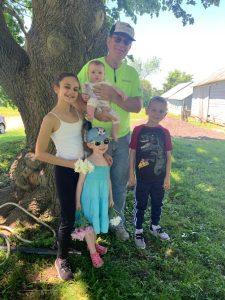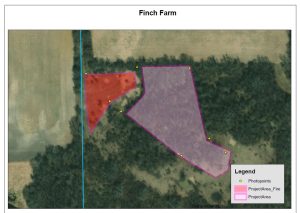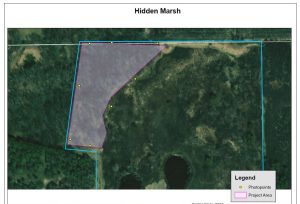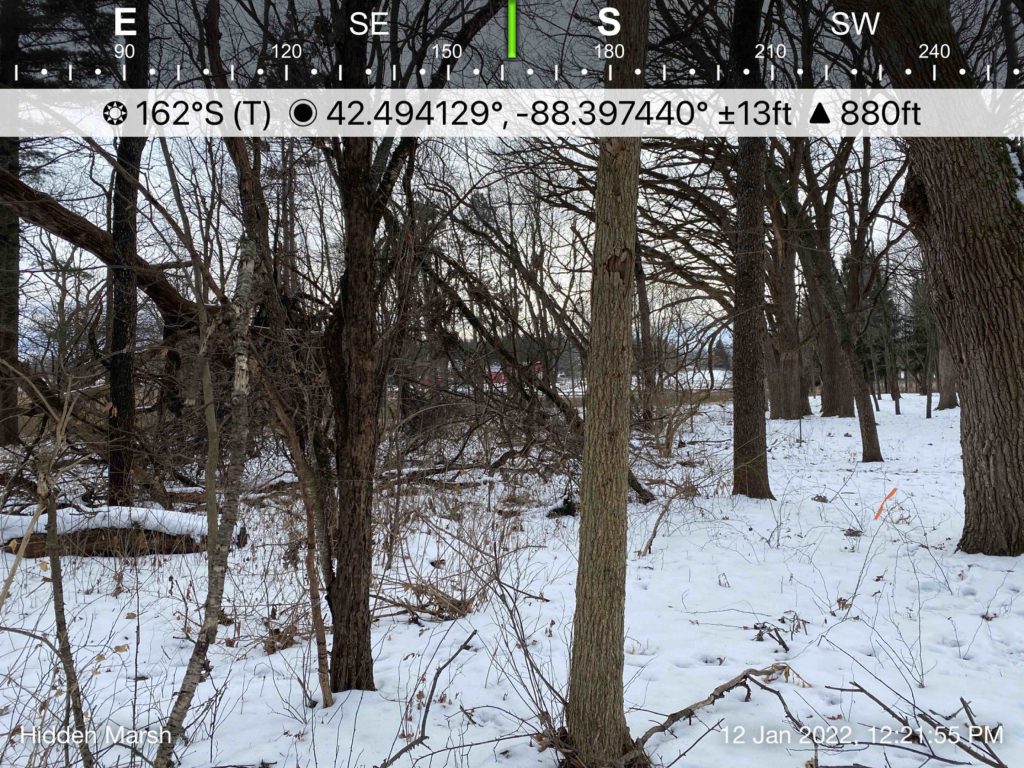
Oak Woodlands Transformed with Grants and Landowner Dedication
In the March issue of Field Notes you learned about grants administered by the Chicago Region Trees Initiative through the Morton Arboretum that are being used to help oak landowners restore and care for their woods. Recipients demonstrated a commitment to caring for their oak woods and were required to match the grant dollars. Five properties were chosen to participate. Here are the stories of two landowners who participated in the program to preserve and restore their oak woods.
Steve Aavang, Finch Farm, Woodstock

Steve has a 21-acre remnant oak savanna – approximately 2.14 acres was cleared with the grant, and he had more work done, which included adding trails. TLC also contracted a 0.65 acre burn on the grassland portion of his property (see map). Native woodland grass seed was purchased by Steve to aid in the continued restoration of the property.
Why is it important to restore oak woodlands in McHenry County?
Since I was old enough to be there, my father would take me to the woods. I find peace, sanctuary, excitement and stimulation–not to mention a lot of exercise when I head out to the woods! I was both very lucky and worked very hard to be able to fulfill a lifelong dream of owning a farm with a woodlot in McHenry County. I had previously worked with TLC when I managed the Finch Farm as the owner sought to preserve the farmland … forever. I told the owner, Ms. Elsen, “forever is a very long time,” but I would see what I could do. When I worked with Lisa Haderlein of TLC to make this a reality I found out that the woodlot was actually a remnant of the original oak grove savannas that once were the dominant ecosystems of the county, but now a scant 1 percent remains in an original state. So you have me as a conservationist, outdoorsman, farmer, and history teacher! I am all in on preserving this vanishing slice of McHenry County.
Why did you decide to participate in this program?
The decision to participate in this program was a no-brainer for me. It will, and has, accelerated the preservation and restoration process. I even expended additional money of my own to expand the scope of work and make the entire site accessible to TLC’s Kim Elsenbroek and her wonderful, hardworking team of volunteer restoration workers.
How do you feel about the results so far?

I get so much pleasure when I find time to get back to the oak grove and see it opening up as the non-indigenous or invasive growth is removed. At my request, the volunteers leave their piles of plant debris in scattered brush piles to provide additional habitat for the birds and animals that use them for nests, burrows, hiding and temporary ‘safe-homes’. In September Kim was out with her team and sent me a photo of an orchid that has returned due to the added sunlight filtering through the oaks.
I am excited to see the program continue and expand, not just on my land, but throughout the county. It shows how TLC is not just preserving the land, but also providing the equally important elements of leadership, education, stewardship and restoration in its basket of services.
Joanne Wiedemann-Wolf, Hidden Marsh, Hebron
Joanne has a 2.8-acre oak woodland with a remnant kame. Her entire woodland was cleared of invasive species with this grant and through her contributions (see map).
The work was done by Davey Tree Expert Company with a forestry mower, stumps were treated with herbicide in the winter and early spring and resprouts were sprayed twice over the spring and summer. Finally, native grasses and forbs were purchased with the grant money, which were hand sown during the spring and fall of 2022.
Why is it important to restore oak woodlands in McHenry County?
As landowners and conservation easement stewards, our location in the Hackmatack corridor and as someone with a strong heritage tie to McHenry County (my German ancestors settled in McHenry County in the mid-1800s), we feel a strong desire to maintain, improve and nurture the oak forests that are left in the county.
Why did you decide to participate in this program?
We knew our oak woods have been neglected over the years and we did not have enough resources to do all the work ourselves. We also cherish our beautiful oak forest. So much so, that we included it in our Hidden Marsh Farm conservation easement.

How do you feel about the results so far?
The initial clearing and results were amazing. We spent a lot of time spreading native seeds purchased from Prairie Moon Nursery. We also plan to include the woods in our spring burn. We are planning to do further work in the woods and on other parts of the conservation easement. We are very thankful that we were considered for this project.



